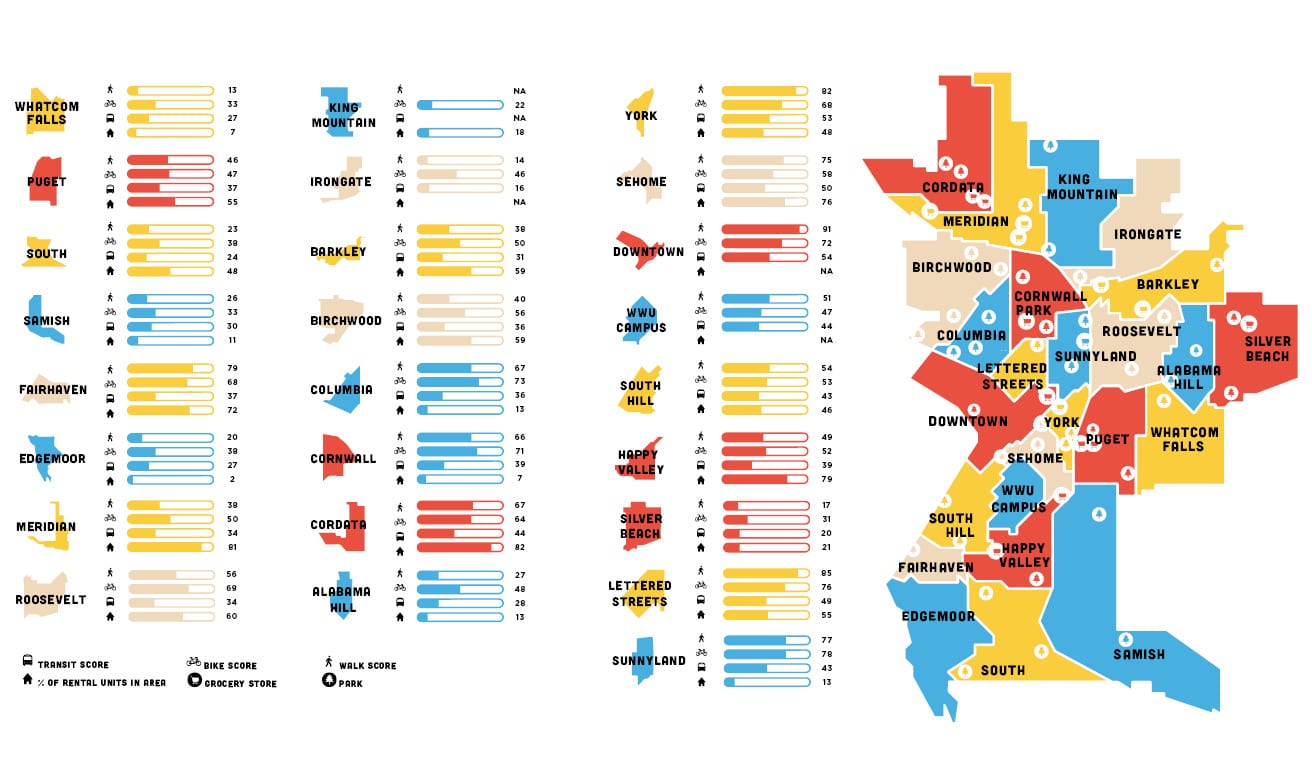Steps to Renting a Place
1. Look up property management reviews online!
Before you start looking for housing know which companies you would like to rent from by looking up ‘Bellingham Property Management’ reviews on Google. Not all companies are created equal so avoid a bad housing situation by getting informed! Check out this interactive map which shows properties with serious safety, health or management issues. You can also look up your landlord’s ratings on Google, Yelp, https://www.apartmentratings.com/ or ask your friends if they have heard anything about the company!
2. Check the Rental Listings multiple times a day
3. Go to a showing of the unit.
4. Assemble your rental history and income information.
Get ready to fill out your application by making sure you know the contact information for any former landlords (including WWU) or references and have your pay stubs, financial aid award letter and any other income documents you may need to upload.
5. Apply for the unit and pay the application fee.
6. Sign a lease
 Important things to know about the rental process
Important things to know about the rental process
START EARLY
Certain times of the year are better for looking for a place to live. For instance, it’s much easier to find a place in the spring or fall, because other people are also getting ready to move out. It’s best to start out around 9-6 months ahead of when you want to move.
PRE-LEASING
Almost every residential lease in Bellingham expires at some point between late May and September. With the ebb and flow of college students, many renters want to lock in their new apartment before the summer kicks off. Many rental agencies in Bellingham begin pre-leasing in February/March/April for houses/apartments available in Fall. Expect your landlord or property management company to contact you months before your lease is up (it can be as early as late winter or spring) to see if you are going to renew your lease.
DON’T SIGN WITHOUT SEEING THE PLACE
We’ve all been there. You’re out of town, or don’t have time to see a place and so you feel like you should just sign the lease so that you have a place to live. Make sure you see the place before you sign the lease, so you know that it’s safe and not a rental scam. Don’t give any deposit or money until you’ve seen the property, and always be sure to get a receipt for payment. Make time to check out the rental and talk with your landlord about utilities, appliances, and the lease. If you have concerns about the rental property, make sure to ask your property manager or landlord about the issues that are important to you and your housemates BEFORE you move in or sign the lease.
THINK ABOUT YOUR COMMUTE
How long does it take to get to school from the place you are looking at? Is it important to you to walk or to be able to take the bus of bike? Where are the closest grocery stores in the neighborhood? Do you own a car? You may need to pay for parking spaces at your place of residence and at your school.
CAN YOU AFFORD IT?
Living off campus often seems less expensive than living in the residence halls, but that is not always the case. Many expenses that you may not think of are covered in your dorm costs like your bed, toilet paper, cleaning products and all of your pots, pans and plates! Before you move off campus make sure to consider how much it will cost to furnish your new home, as well as buy groceries, pay for transportation to and from school, and any other financial strains you may have. Most landlords require a first and last month’s rent as well as a damage deposit when you sign a lease, so plan for that as well.
Calculate your budget including rent, utilities, tuition, and food expenses with the resources on our budgeting tab.
CHECK OUT THE NEIGHBORHOOD
Walk around the neighborhood and see how you feel. What is it like midday versus night? What are the noise levels like, is it a party spot or is it a family spot? Also, make sure to consider your commute. Is there plenty of parking for you, your roommates and your neighbors or will you need to find alternative transportation. The walk/bike/bus score is a rating system that tells you how close an area is to basic amenities like businesses, parks, theaters, schools and other common destinations. The higher the number, the easier it is for you to walk, ride your bike or take the bus to places you need to go! Also check out these videos which will give you an overview of each of Bellingham’s neighborhoods courtesy of Keith Cook, Team Leader at RE/MAX.

All information credited to www.walkscore.com & https://www.cob.org/.